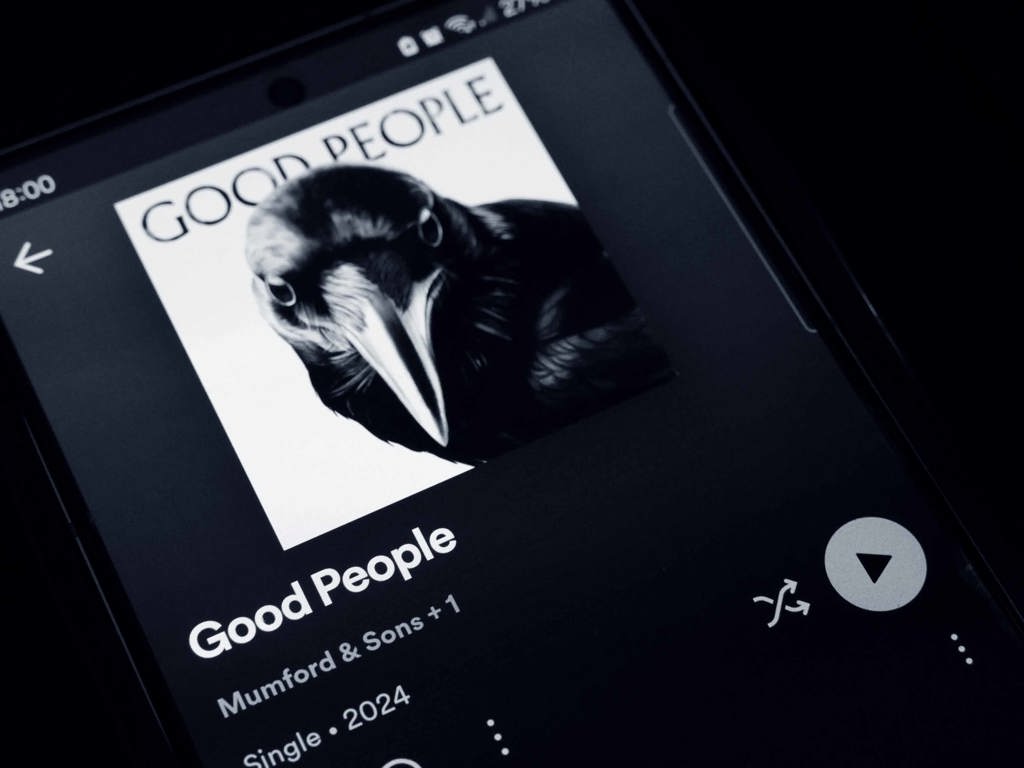The Mumford & Sons have gotten lost on their quest for a new musical identity with their latest single.
Made popular by the individuality of their acoustic folk sound, Mumford & Sons started their careers with the album Sigh No More in 2009. Characterized by Marcus Mumford’s raspy voice and the pandemonium of the band’s massive reverberating compositions.
Mumford & Sons rose to popularity in 2012 with the release of their second album. Babel produced the Grammy-nominated song “I Will Wait” and won the band album of the year.
The musicality of Mumford & Sons’ first two works, for lack of better words, was huge.
“The Cave,” Sigh No More’s second track, starts quietly with a strong acoustic guitar line and a delicate piano rhythm. But as the song progresses, more instruments join the growing crescendo, teasing the listener as it grows and shrinks before finally hitting an indescribable peak to close things out. The feeling produced by this musical climax gives the listener no choice but to crank the volume and give way to the need to dance and shout which the song demands of its listener.
But “The Cave” wasn’t a one-off. Sigh No More also totes the tracks “Sigh No More” and “Little Lion Man.” Babel is known for “Whispers in the Dark,” “Lovers’ Eyes” and “Not with Haste.” All of these songs can’t help but be hits, and while I am usually a proponent for trying new things musically, Mumford & Sons had found their Holy Grail. So why try something new?
The respective 2015 and 2018 releases of Wilder Mind and Delta did not bring the band as much success as they had hoped, continuously being ranked lower than their first two albums on comparative lists. This is likely the result of the band’s departure from their traditional sound, one that was so loved by their fans. After some internal band drama and the COVID-19 pandemic, the members of Mumford & Sons took some time apart to try their hand at making some solo music. Marcus Mumford went on to release his debut album (self-titled), which would rank fourth in the charts in the UK.
But now the Mumford & Sons are back, and their newest single “Good People,” featuring Pharrell Williams, seems to be a further departure from the sound that made the band so popular in 2012.
“Good People” opens with a folky guitar line, tricking the listener into thinking the band might have taken the cue and gone back to their roots. But the song quickly dissolves into something that sounds like a bad cover of an Imagine Dragons song, populated by an aggressive bass drum beat and church choir-inspired background vocals.
There isn’t much to say past this, as the musicality changes very little as the track progresses. Some synth-distorted piano and bass appear toward the end of the song but do little to produce any rising action. Within three seconds of the track opening, the band has given the listener the song’s musical climax and there is nowhere left to go from there. The next three minutes are just filler until the song is done.
“Good People” isn’t all bad. The bones of the song are promising if taken out of the context of Mumford & Sons. If the right producer had gotten their hands on the track, they probably could’ve made something decent out of it. In fact, I probably would have liked the song a whole lot more if it hadn’t been released by Mumford & Sons. Most of my qualms come from the fact that “Good People” goes completely against the expectations I had set for the band’s newest release.
While the band is obviously looking to test new waters and explore new genres, the road they took with “Good People” should be avoided at all costs in the future. If Mumford & Sons are looking for success, they should go back to their roots. And if they choose not to do so, they shouldn’t expect success at all.

